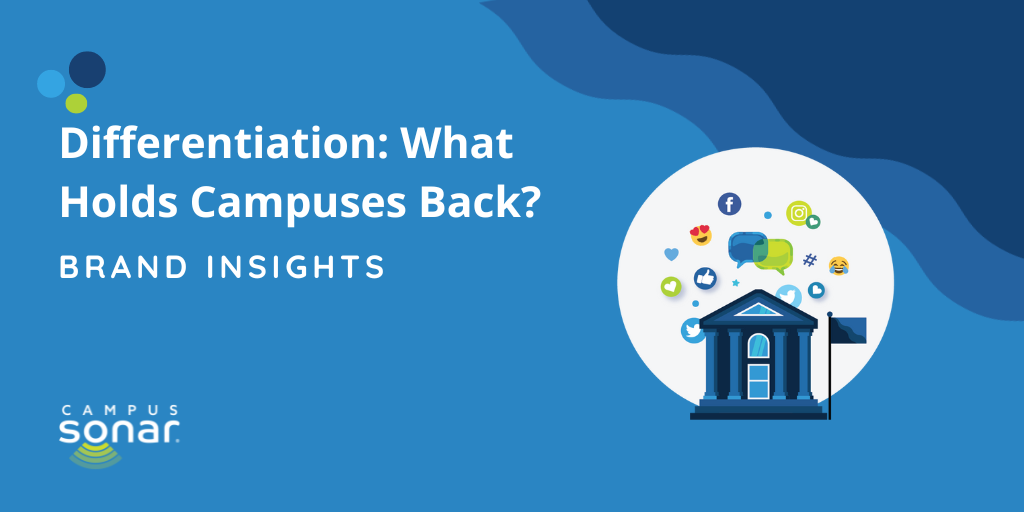Differentiation: What Holds Campuses Back?

Each has unique characteristics and culture that set it apart from its competitors. No institution has the same combination of values, culture, people, programs, and facilities it takes to deliver its education outcomes and experiences.
Rob Zinkan outlined why higher ed institutions struggle with the concept of outward differentiation. Their inward-facing perspective affirms the belief that students and donors already recognize the value without saying it, shying away from bold brand messages that may prove controversial with internal stakeholders.
I’ve been there myself working with boards, leaders and faculty—it can escalate quickly.
What I learned from my time on campus is that a strategic process and roadmap, combined with relevant realtime research is a powerful combination.
Once you’re certain how deep your differentiation needs to go, whether it’s organization-wide, school or department-level, or your program portfolio, it's always best to start with research. Research is your anchor point. Listening to the views of your students and prospects adds context to internal perspectives, and market and competitor data is the root of your outward vanilla brand. Research identifies competitor gaps and opportunities that will shape your strategic outcomes and alleviate some of the most important risks.
Here’s what I’ve learned from my time on campus as a foundational formula for tackling differentiating a college brand:
- Start with research and social listening
- Clarify your top 5-10 competitors for your institution.
- Listen to the views of your students and student prospects
- Listen to the challenges and missed opportunities of your colleagues
- Analyze the critical internal data that matters.
- Identify the opportunities
- Establish the strengths and weaknesses of your brand.
- Connect the dots between capabilities and market needs.
- Where can you beat out the competition efficiently?
- Clarify the risks and expected outcomes.
- Set goals and metrics for why, how, and what it will accomplish.
- Establish the risks in changing strategy.
- Obtain cabinet and board buy-in.
- Monitor and measure progress with social listening
- Create a roadmap for institutional success.
- Set continuing metrics that measure progress.
For me, the best part is that when your process reaches the end of the strategic roadmap, you’ll still have social listening to use as a benchmark—to continue to monitor and measure progress to help current and future leaders across the organization stay on track and on message for years to come.
